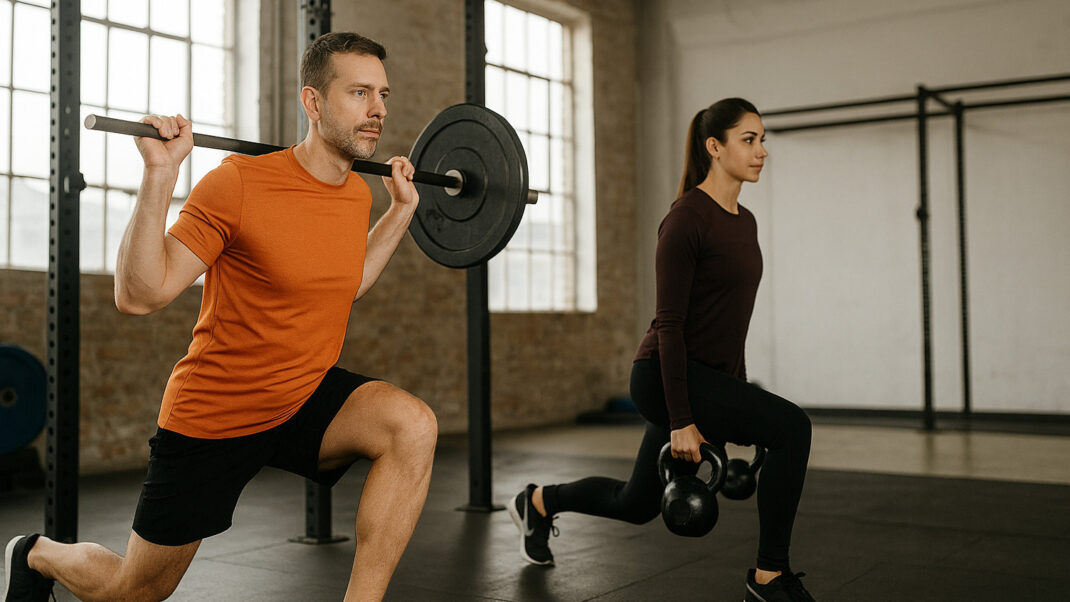Don’t Let AI Be Your Only Coach
Understanding the Risks of AI-Designed Fitness Plans

In today’s tech-centric world, it’s tempting to ask an AI chatbot for a personalized fitness plan. However, while AI tools can offer ideas and structure, relying solely on them comes with serious risks. Here’s what you should know – and why certified fitness professionals still deserve your trust.
Generic Advice, Not Proper Personalization
AI tools generate workout plans based on patterns in data – often lacking the nuance you need. A user’s experience in Time tested ChatGPT as a “personal trainer” and found glaring gaps: no clear set-and-rep structure, missing intensity specifics, and lack of injury awareness – all essential for safe and effective training.
Safety Oversights That AI Can’t Catch
Real trainers monitor your form, fatigue, subtle pain cues, and adjust in real-time. AI, however, can’t observe you in real life. A recent article highlights how AI workout plans may unintentionally increase injury risk – especially when they rely on incomplete information or fail to account for personal limitations.
AI systems often operate as “black boxes,” making decisions without transparent reasoning. This opacity can lead to unreliable or unsafe fitness advice, especially without context about your individual circumstances.
Moreover, AI models reflect biases found in training data, potentially disadvantaging users whose backgrounds or needs aren’t well-represented.
Privacy and Data Security Concerns
AI fitness tools often collect personal activity and health data. Without strong privacy safeguards, that data may be misused. For instance, Strava has begun limiting third-party AI use of its data – reflecting growing concern over how sensitive fitness data is handled.
Additionally, many fitness apps still have unclear consent policies, leaving gaps that can affect user privacy – especially if biometric or health data is exposed.
Legal and Liability Grey Zones
When AI gives you workout advice, who is responsible if it leads to injury? Unlike certified trainers, AI tools aren’t insured or legally liable. This leaves users in a grey area – without clear recourse.
A Better Path: AI as a Tool, Not a Replacement
AI shines as a source of inspiration or a starting point – but should complement, not replace, human expertise. Researchers recommend using a hybrid model: AI for data-driven insights, and qualified professionals for safety, motivation, and personalized guidance.
Final Thoughts
Yes, AI-generated workouts are accessible and novel. But their limitations include:
| Risk | Implication |
|---|---|
| Oversimplification | Plans may miss critical safety or individual factors |
| Lack of oversight | No real-time feedback for form or fatigue |
| Data privacy | Potential misuse of your personal fitness data |
| No accountability | AI lacks legal protection or insurance for errors |
For real, sustainable, and safe progress, invest in a certified fitness professional. They bring:
- Adaptability to your changing needs
- Accountability and motivation
- Injury prevention and progression oversight
- Evidence-based expertise aligned with your body and goals
References
- Forbes Technology Council. Capabilities and Challenges of AI-Enabled Fitness Applications. Forbes, 13 Sept. 2023. https://www.forbes.com/councils/forbestechcouncil/2023/09/13/capabilities-and-challenges-of-ai-enabled-fitness-applications/
- Musa, Miriam. Why AI Workout Plans Might Be More Dangerous Than Helpful. Rolling Out, 20 June 2025. https://rollingout.com/2025/06/20/ai-workout-plans-risks/
- “I Used ChatGPT as My Personal Trainer. It Didn’t Go Well.” Time, 20 Mar. 2024. https://time.com/6958557/chatgpt-workout-plan/
- Sumner, Michael. The Legality of AI-Generated Fitness Coaching Explored. ScoreDetect, 12 Feb. 2024 (updated 6 May 2025). https://www.scoredetect.com/blog/posts/the-legality-of-ai-generated-fitness-coaching-explored
- “AI Agents: Greater Capabilities and Enhanced Risks.” Reuters, 22 Apr. 2025. https://www.reuters.com/legal/legalindustry/ai-agents-greater-capabilities-enhanced-risks-2025-04-22/
- “Strava Closes the Gates to Sharing Fitness Data with Other Apps.” The Verge, 19 Nov. 2024. https://www.theverge.com/2024/11/19/24301056/strava-api-ai-data-sharing-policy-change-fitness-tracking
- Alhajri, May, Ahmad Salehi Shahraki, and Carsten Rudolph. Privacy of Fitness Applications and Consent Management in Blockchain. arXiv, 1 Mar. 2022. https://arxiv.org/abs/2203.00791



